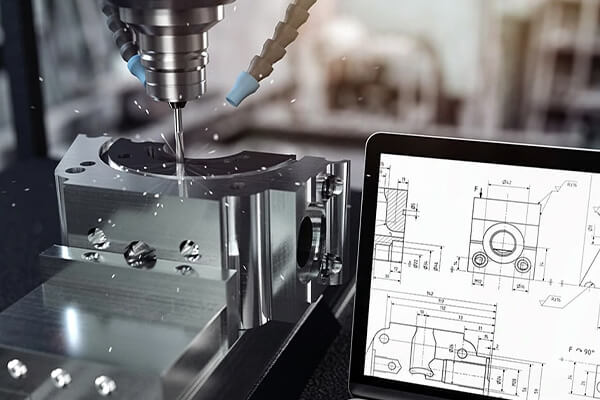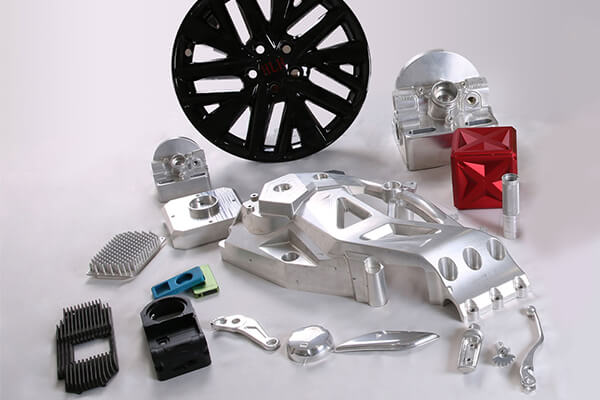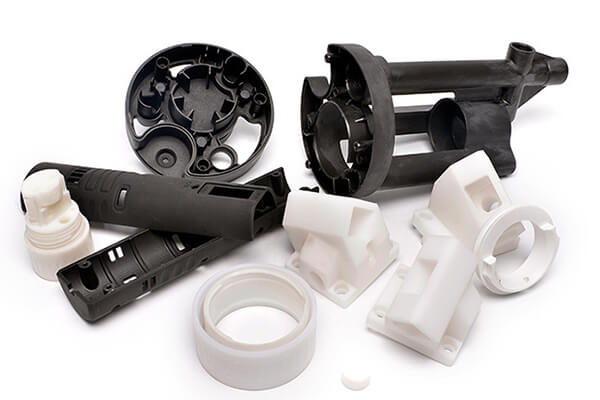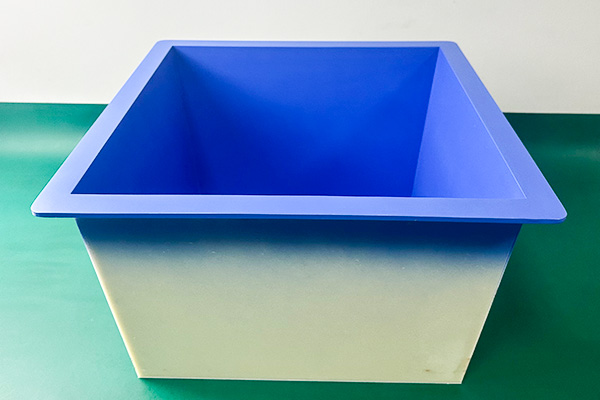Prototype Production: Metal and Plastic Rapid Prototyping
Prototype production plays an important role in product development. For example, prototype production can help to determine whether design concepts are feasible. By a practical prototype production, you can better evaluate the appearance, functionality and performance of a product. You can simulate the actual usage and check the performance, reliability and durability of the product by a prototype production. Prototype production also can be used to demonstrate to potential customers, partners or investors to get their feedback and feedback. This allows you to understand their interests, needs and preferences in the product, and to assess the market potential and competitiveness of your product.
Sungpalstic delves into prototype production and provides a rapid prototyping for metals and plastics. Welcome to know more about our services.

The Prototype to Production Process
Every product development process is unique, yet they all share common elements. Foremost among them is addressing your priorities. Assuming your goal is to introduce a commercial product to the retail market, consider these initial questions:
Product Objectives: What is the primary purpose of this product?
Target Audience: Who is the ideal end user or customer?
Market Demand: Is there a demand for your innovation? Does the market have space for it?
Resource Investment: How much time and financial resources are you willing to invest in bringing this idea to fruition?
With clear, realistic answers and a commitment to proceed, your first step is to create comprehensive drawings that illustrate all crucial features and dimensions for every component.
Invest in Design Drawings
If you possess design expertise and access to design software, you can handle this phase yourself, ensuring accuracy through careful consideration.
2D drawings, or blueprints, provide dimensions, tolerances, surface finishes, and other quantitative data. 3D drawings serve the same purpose while aiding manufacturers in programming digital manufacturing machines.
If design isn’t your forte, consider hiring a professional consultancy. The design stage is pivotal, where potential errors are most easily detected and rectified at a minimal cost.
While it’s possible to create a basic model from a sketch on a paper napkin, it’s limited to simple shapes and often requires extensive trial and error.
Keep Simplicity
We advocate simplicity because straightforward designs are quicker, more cost-effective, and can utilize readily available, affordable materials. Complexity increases costs, production time, and the likelihood of errors or rejected parts. A simple design also mitigates financial risk if the project proves unfeasible.
Relaxed Tolerances
For most designs, we recommend looser dimensional tolerances, except for critical features, which should be kept to a minimum.
For instance, CNC machining can achieve tolerances of +/- 0.05mm (50 microns), sufficient for the majority of consumer and industrial components. Tighter tolerances are possible but demand more time, expense, and result in higher reject rates without significant performance improvement.
Create a Bill of Materials
While an initial prototype production may not require a comprehensive BOM, production necessitates accounting for every component. Every nut, bolt, screw, button, clip, paint, or glue must be tracked as a separate cost. A detailed BOM aids in cost assessment, particularly for high-volume production.
Material Selection
While prototype production may use expensive or exotic materials for showcasing or marketing purposes, high-volume manufacturing benefits from common raw materials. They are cost-effective, readily available, and manufacturers are experienced in working with them, ensuring consistent results.
Surface Finish
Prototypes with intricate surface finishes may not be practical for large-scale production due to their labor-intensive nature. For non-cosmetic parts, an “as machined” surface finish is efficient. Cosmetic surfaces can be painted or plated for excellent results. Anodizing is a durable surface treatment for aluminum and titanium, allowing batch processing as needed without minimum volume commitments.
4 Tips for Prototype Production
Now that you have completed your design preparations, it’s time to proceed to the next crucial step: building a physical prototype. Here are four valuable tips to guide you through the process:
Seek out a Specialized Prototype Production Partner
Developing a prototype requires specific expertise that may differ from mass production methods. It’s not just about the machinery or equipment involved. Creating a prototype demands meticulous attention to detail and a high level of flexibility in terms of materials and craftsmanship. Not all factories are equipped or inclined to handle small custom orders with such precision.
By partnering with a specialized prototype production manufacturer, you can ensure that your design intent is effectively communicated and translated into a physical part. These manufacturers are accustomed to working closely with design partners and understand that perfecting a single part may take weeks. Their expertise and dedication will greatly contribute to the success of your prototype production projects.
Consider Fidelity
Fidelity refers to the degree of accuracy with which a prototype replicates the form, fit, and function of the eventual full production part. Prototypes with higher fidelity require more time and resources to create but yield superior data for testing purposes. Investing in high-fidelity prototypes provides you with a clearer understanding of production lead times and costs, making it a wise investment.
By prioritizing fidelity in your prototype, you gain valuable insights into how the final product will perform, ensuring a more accurate representation of its functionality and characteristics.
Selecting the Appropriate Manufacturing Process
There are two main materials used in prototype production: metals and plastics.
Metal Prototype Production
When it comes to creating metal prototypes, there are typically three primary methods: machining, stamping, and 3D printing.
CNC machining is a versatile process suitable for producing solid or semi-solid components from various metals, rigid plastics, and even carbon fiber. It offers numerous advantages for prototyping, such as its speed, flexibility for modifications, and the absence of tooling commitments or minimum order quantities. A significant benefit of CNC machining is its ability to produce high-fidelity prototypes that closely resemble the final production parts. This ensures that the prototype can be used for engineering testing and product certification, as it possesses the same strength and characteristics.
Metal stamping is employed for creating thin-walled parts like box enclosures, flat plates, fixtures, and brackets using sheet metal. Laser cutting or machining can be used to add holes and slots to flat plates during the prototyping stage. However, it should be noted that metal stamping is not practical for high-volume production, as it necessitates dedicated cutting dies.
3D metal printing is capable of producing highly complex geometries, and the resulting metal parts are notably robust. However, there are certain considerations to keep in mind. 3D printing, particularly for metal, involves an intricate and costly design process to achieve optimal results. It is a slower and more expensive method, and post-machining is often required before the printed parts can be used. It is advisable to explore 3D metal printing only when the design cannot be feasibly produced using conventional methods. Importantly, it is crucial to note that 3D metal printing is not suitable for high-volume production scenarios.

Plastic Prototype Production
When it comes to creating plastic prototypes, there are three common methods: CNC machining, polyurethane vacuum casting, and 3D printing.
For solid or semi-solid parts with medium to high complexity, CNC machining or 3D printing are suitable options. Machined parts offer greater strength and tighter tolerances, albeit at a slightly higher cost. On the other hand, plastic 3D printing offers cost-effectiveness, speed, and a range of different printing methods that provide varying levels of fidelity, surface finish, complexity, and strength. Many product developers can take advantage of local printing services, allowing them to quickly obtain physical prototypes and evaluate their designs within a matter of days.
Polyurethane vacuum casting is utilized for creating enclosures that closely resemble the appearance and surface quality of true plastic injection molded parts. In this process, silicone molds are formed around a 3D printed master pattern, allowing for the creation of up to 20 copies of the original. This method excels in producing showroom-quality prototypes that closely resemble the final product.

Transitioning to Production
Moving from prototyping to volume manufacturing requires a shift in focus towards maximizing production throughput while minimizing costs. However, before reaching this stage, it’s essential for product developers to understand the differences between prototypes and production parts.
From CNC Prototyping to CNC Production
Since CNC machined parts exhibit high fidelity, there is minimal distinction between a prototype and a production part. Suppliers may optimize the cutting program for increased throughput or employ various jigs and fixtures to machine multiple parts in a single setup. This advantage allows developers to scale up volumes while gaining a clear understanding of the cost per piece and production lead times.
The choice of plastic or metal does matter in certain cases, and the subsequent section will elaborate on the reasons why.

Planning for Certification and Testing
Unlike prototypes, production parts intended for commercial sale must undergo certification according to various safety and regulatory standards. The specific certifications required will depend on factors such as the product’s intended environment of use, whether it is powered by electricity, and the target market country.
It is important to be prepared to send finished products to different organizations for certification and factor in the time and expense associated with this necessary step in the production process.
Start Your Prototype Production Projects with Sungplastic
Sungplastic’s prototype production solutions include:
Metal prototype production
Plastic prototype production
CNC rapid prototyping
3D prototyping
Batch manufacturing
From design to prototype production
Sungplastic allows to create rapid prototypes for your unique designs and concepts at a competitive cost.
If you are looking for a prototype production provider or planning to invest, welcome to discuss with us.
Get a free quote and design analysis today.
We’ll reply to you within 6 working hours.
We respect your privacy.
+86 139 2927 4777 (WhatsApp, Wechat)
